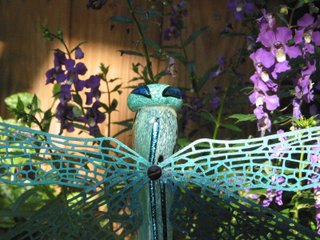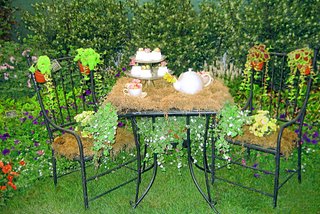Art in the Garden



If a landscape is very formal in design, does that mean it inevitably has a stiff, sophisticated ambience? Does a more natural design automatically create a more relaxed effect? The ambience or “mood” of a landscape or garden design can certainly be influenced by the types of plants selected and the way the plants are arranged, but the effect may vary with the seasons.
Hardscapes and artistic motifs can be used to create a unifying theme between the architecture of the home and the design of the landscape. If the house is of a distinctive architectural period, or if the hardscapes and garden structures feature prominently in the landscape design, those features alone could conceivably create a mood.
The type of ambience would largely depend on the style of the house -- a plantation-style house surrounded by live oaks and magnolias would only need a tray of mint juleps to recall the old South. A house incorporating native stone, and repeating native stonework in the outdoor hardscapes, could create a feeling of the great outdoors by including a natural-looking water features along with wildflowers or a woodland.
Many homes today, though, were not designed along the lines of any classical architectural styles. When the architecture is somewhat generic, there may be an opportunity to create an atmosphere by developing a theme or style that works with the appearance of the home as well as the homeowner’s tastes.
Japanese-style gardens are extremely popular today, in part because they can be interpreted in a variety of ways. Some people define Japanese gardens by the plants -- carefully pruned weeping cherries, Japanese maples, plus pines and other conifers -- while others define Japanese gardens by their use of sand, stone and water, with plantings at a minimum. Others insist that a garden is not “Japanese” without lanterns, stone dragons, bamboo and other accents. Many books have been written about authentic Japanese gardens, but most people don’t require authenticity as much as ambience -- a sense of spirituality, simplicity and serenity.
When it comes to creating ambience in a landscape through the use of garden art in addition to plants, hardscapes and structures, there are no hard and fast rules regarding the scope of the project. An enclosed garden room might be the focus of the design, with a few repetitive features throughout the landscape. A more ambitious project, with a correspondingly larger budget, could tie in custom hardscapes and garden structures with distinctive artwork to pull the theme together.
Flower shows such as those in Chelsea, England, Cincinnati, OH, and others across the United States often feature gardens designed around a single ornate urn, a unique sculpture or a distinctive garden structure. A popular theme in recent years has been to create a garden based on a famous work of art or an artistic style. Examples of this would be designing a palette of flower colors to replicate the colors in a Turner sunset, recreating a section of Monet’s garden at Giverny, or using Van Gogh’s bold colors in combination with sunflowers or other flowers the artist liked to paint.
Whether the design includes a single piece of artwork or an elaborate combination of art, hardscapes, structures and plants, artwork can be most effective when it either reinforces a mood or creates its own ambience. Today there are numerous resources for unusual forms of garden art -- bas relief brick sculptures, art made with moving water, art made to blend in with nature or art that is in stark contrast to the landscape, in both color and form. It doesn’t have to be elaborate - single urn can create the image of an Italianate garden, while a few polished river rocks can become the focus of a meditation garden. A few carefully chosen pieces of art combined with a little imagination and creative flair can breathe some life into almost any landscape design.
END
File Name: Ambientart
Word Count: 644 words
Originally published in The Landscape Contractor magazine
Photos: Jonathan Davis, Becke Davis, Martin R. Davis
Comments